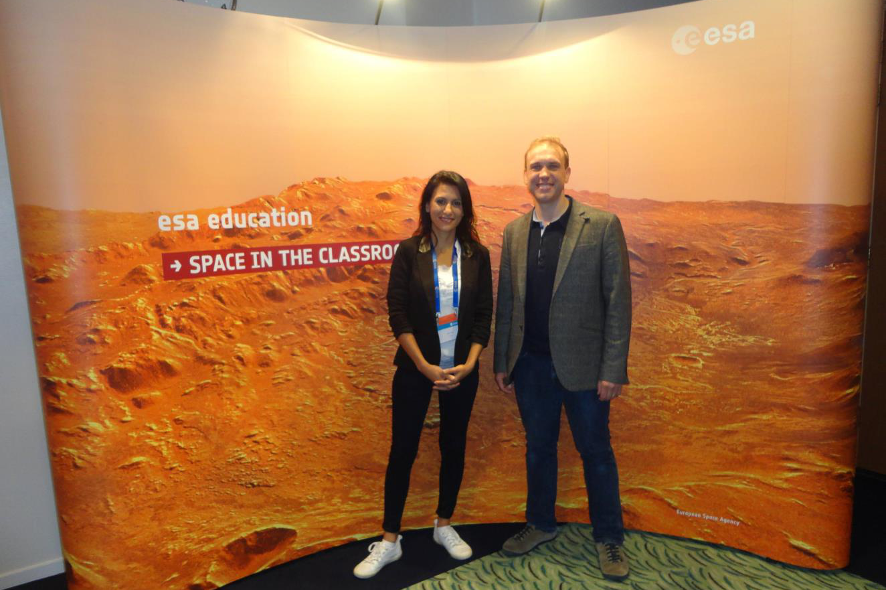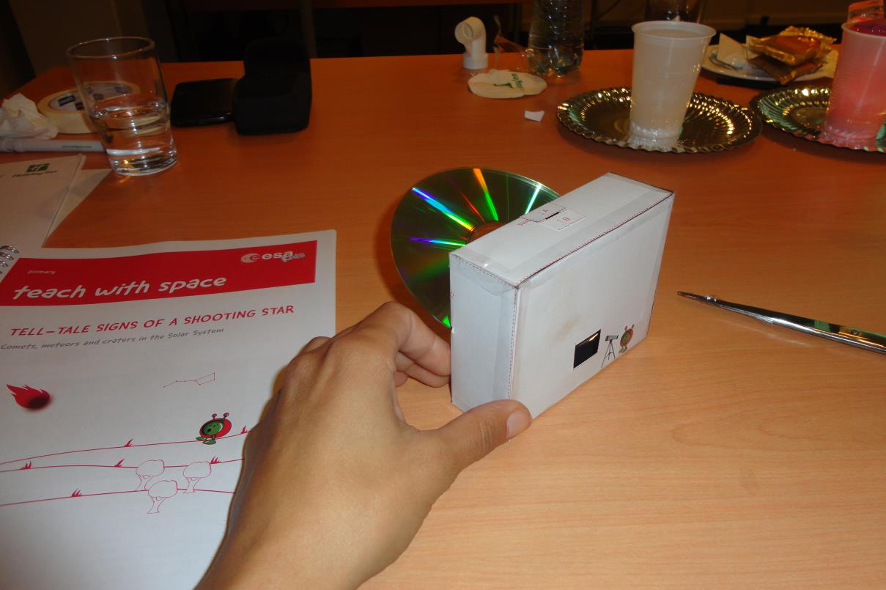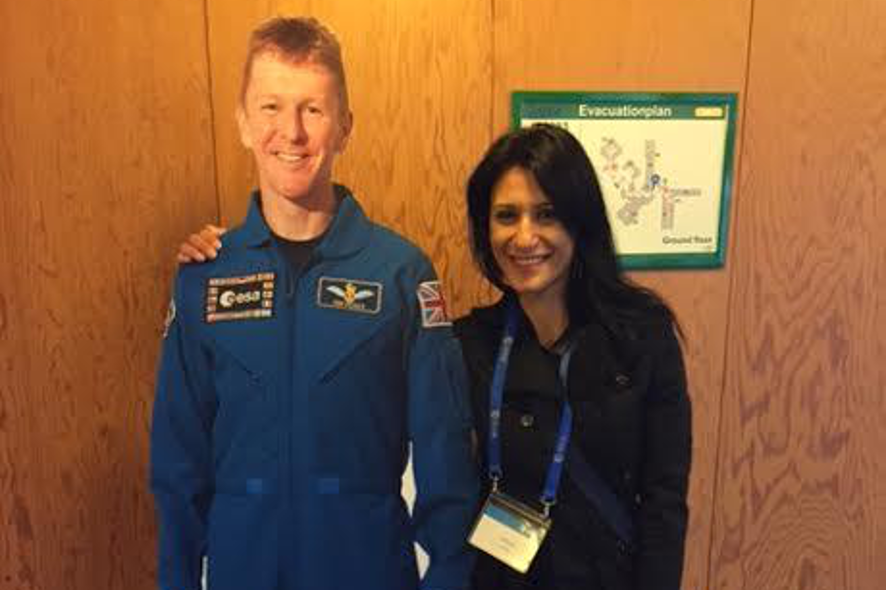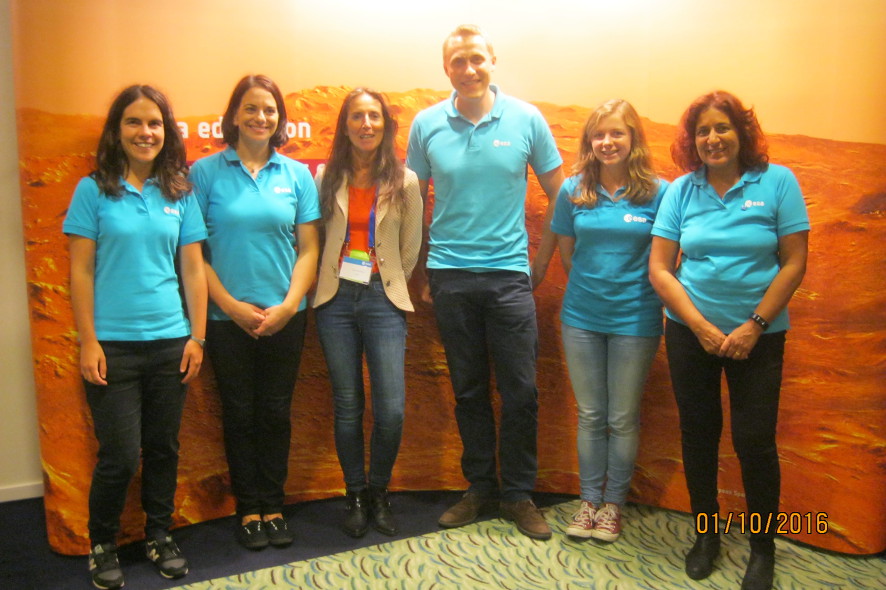On October 1, 2016, two elementary school teachers—Marion Sternberg from Vienna and Danna Awad from Upper Austria—embarked on their journey into the fascinating world of the ESA and space exploration. What they experienced there and the insights the two educators took home with them are reported in this blog posting.
Danna Awad: “The program began on Saturday, October 1st at 9:30 AM with a meet & greet for all participants, at which Ms. Sternberg and I had the honor of representing Austria. We received a briefing about ESA and their various space exploration activities. I saw the conference as a journey, an excursion into the world of research and discovery, and, at the same time, the world of amazement. The images and impressions are fascinating, and also prove that there’s much yet to be discovered. I was particularly enthralled by a speech by scientist James Carpenter, who discussed the history of the Moon. And he also posed what is, in my opinion, a very important question: ‘What is exploration?’
According to Carpenter, the discovery of water on the Moon is especially significant because it means we’re assured of having sufficient resources and we don’t have to worry about them being in short supply on Earth. I’ve been giving a lot of thought to the visions of traveling to the Moon and Mars, where human beings could build so-called villages in which people from many nations coexist and each brings in its own specialized skills and knowledge.

Danna Awad with James Carpenter
But I ask myself if this can really be implemented. As far as the technology and organizing the construction are concerned, and in light of the rapid development and progress on Earth, I can see how this certainly could be doable. The question is whether we’ll be able to live in peace with one another. What would happen if valuable raw materials were discovered on the Moon? Which country would be entitled to bring them back to Earth? Who decides how they’ll be divided up? Can this proceed in harmony?
The progress humankind has made in the exploration of outer space is astounding. In my opinion, these issues ought to be addressed and called into question—and by school children too. After all, these matters will have an impact on the members of that generation and their habitat.
Following a short break, there was a talk about getting to outer space—about the physics of leaving the Earth’s atmosphere and how a rocket works. Then, we took the information we had received and did some R&D of our own, and tried to construct a paper rocket that can fly as far as possible. I found this very interesting, and for pupils, it’s surely a great opportunity to test how something works. Like, cause and effect. How much air pressure? Which angle makes a long-distance flight possible? Which nose-cone design is most aerodynamic? We achieve results though experimentation.

Following takeoff of the rocket, we found ourselves in outer space. The focus was on what one sees from this vantage point—and not just on Earth; everything that exists all around, and all that’s happening. They explained to us which satellites the ESA launched, how they work, how information is transferred, and what fascinating images are generated from other perspectives. In this segment, the theme was the magic of light. We used a do-it-yourself spectroscope to experience the properties of light and to behold them with our own eyes.
This makes it possible for pupils equipped with a simple spectroscope to see light not only as “white light” but also to clearly see the phenomenon of refraction and, furthermore, to understand how light is refracted and see which colors make up “white light.” Another topic was comets, meteors and craters. My personal favorite was the practical portion in which we experimented with using flour and cocoa to form a crater on a flat surface. In this experiment, it was not possible with 100% certainty to determine what the result of the collision of two objects would be. One could specify the direction and height of the marble, but one never knew what the result would look like.

On the second day, we visited the European Space Research and Technology Center (ESTEC) in Noordwijk. There, we were received by Franco Ongaro, ESA’s director of technical and quality management and head of ESTEC, who answered important questions about development and collaboration among European countries. ESTEC is the site of many labs for testing materials and the workability of satellites. And astronaut Andre Kuipers gave an account of his experiences in space.
This weekend really motivated me to integrate the fascinating topic of outer space into my classroom instruction. The pupils are already looking forward to this. They’re busily conducting research about phenomena such as black holes, planning projects, and getting informed about the various types of satellites the ESA operates.

I’d like to express my thanks to the ESA Education Team for the inspiration and the marvelous organizational work. This spark has caught fire among the pupils attending the Sokrates School in the Mühlviertel region of Upper Austria. Our young researchers are totally enthused about the ESA.”
